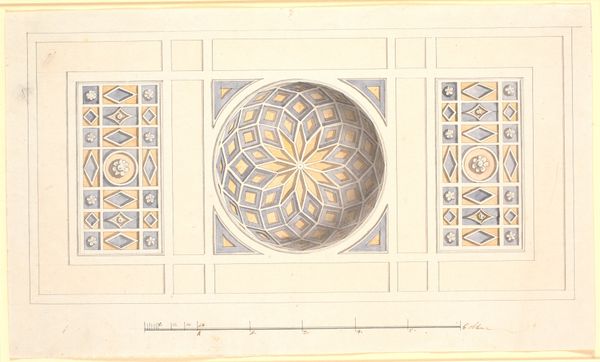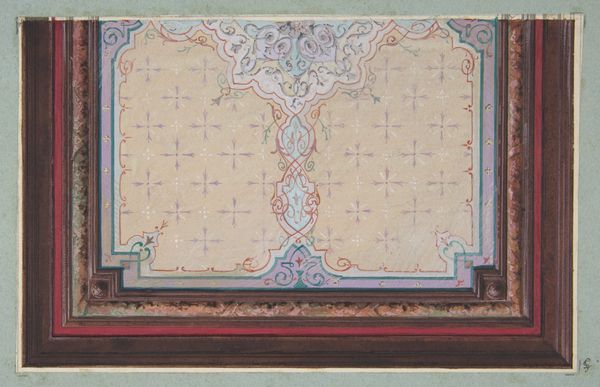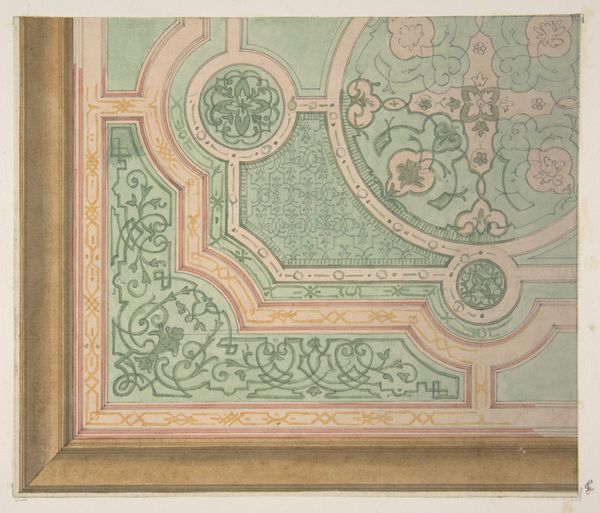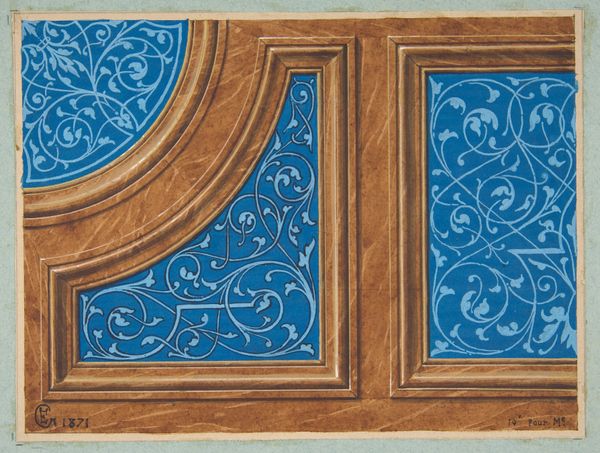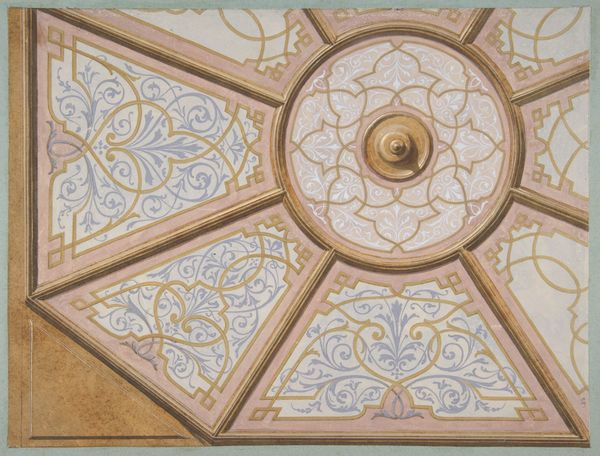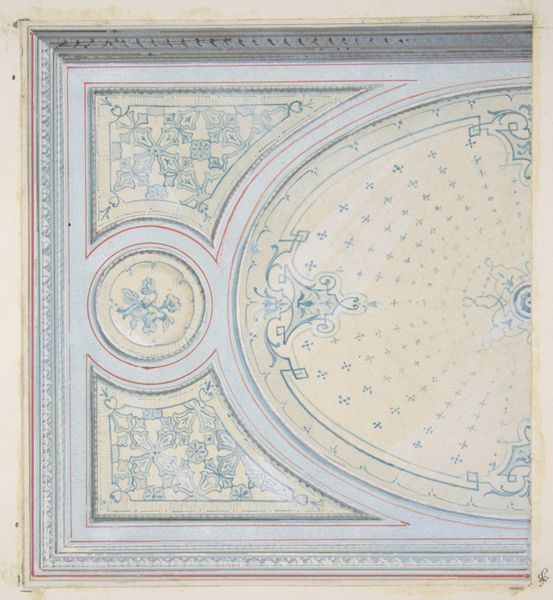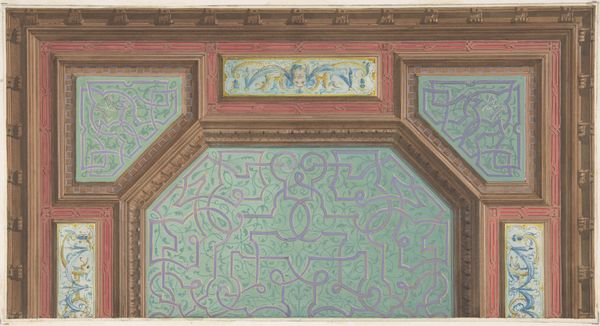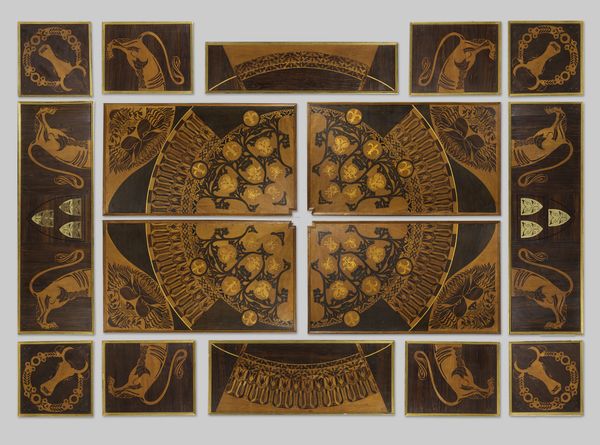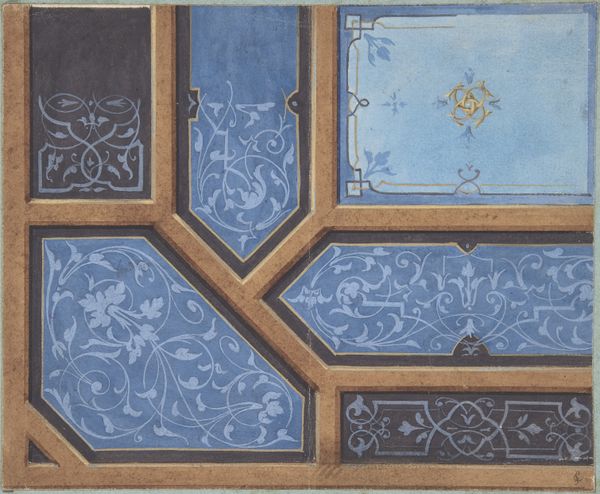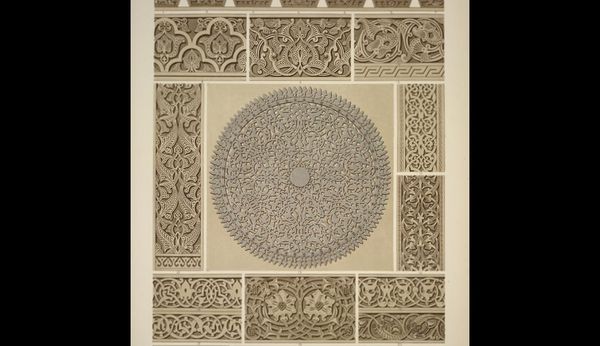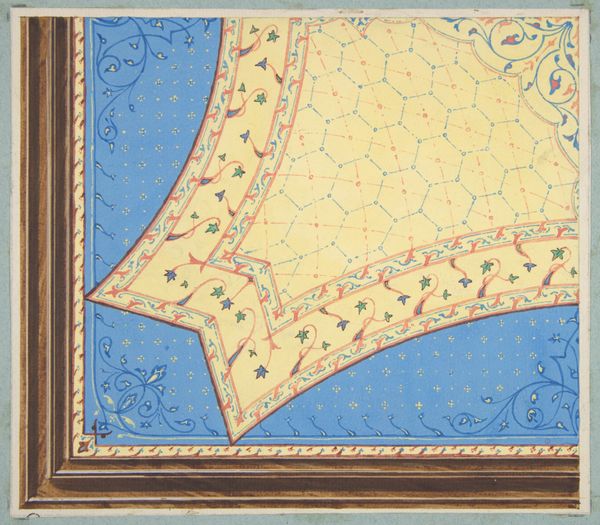
Design for the painted decoration of a ceiling 1850 - 1900
0:00
0:00
Dimensions: sheet: 11 x 9 7/8 in. (27.9 x 25.1 cm)
Copyright: Public Domain
Curator: Ah, this drawing presents “Design for the painted decoration of a ceiling” created sometime between 1850 and 1900, likely intended as preparatory work for a larger commission. The artist? Jules-Edmond-Charles Lachaise. Editor: The first thing that strikes me is how light it feels, almost airy, despite the intricacy of the design. You see a delicate lattice pattern of light blue watercolor and a grounding wooden framework. There is a tension between surface embellishment and structural support in the frame. Curator: Exactly. This blend points us directly toward Art Nouveau, doesn’t it? Observe the swirling, organic forms contrasted with the precise geometric shapes. The fleur-de-lis motif, repeated at intervals, acts as an emblem of heritage, possibly invoking the family’s history or social status intended for this space. It’s an appeal to cultural memory, placed quite literally above one’s head. Editor: And consider how these effects would've been produced. Transferring this intricate drawing onto a curved ceiling would have been laborious, piece by piece. What kind of scaffolding, and skilled artisans, would be needed? The wooden frame doesn’t just set off the delicate surface; it is a nod to craftsmanship. The geometric corner inset emphasizes labor: cutting, fitting, joining – it’s like a miniature sample book. Curator: I agree. I wonder about the social function that all that artisanal care produces. Think about how this ornamentation can represent luxury. Imagine how it feels for people in a home under a highly decorated ceiling like this, reflecting status and achievement through visible markers of taste and expense. It’s intended to uplift both literally and figuratively. Editor: Definitely. Even in a drawing, the interplay between the geometric precision of the 'grid' and the fluid lines of the vegetation is appealing. Was this the creative mind testing two types of production at once: handmade vs something approximating a manufacturing process, in the patterns on the wood itself? Curator: Good point. It’s a reminder that even “high art” designs are rooted in the mundane world of materials and production, with many of those connotations implied at once through those details that suggest status and family connection. Editor: This work offers a beautiful collision of ornament and industry. A design is inherently about an imagined labor and material assembly. Curator: Agreed. A meditation on symbols of prestige and an assertion of labor all bound together in this single study.
Comments
No comments
Be the first to comment and join the conversation on the ultimate creative platform.
